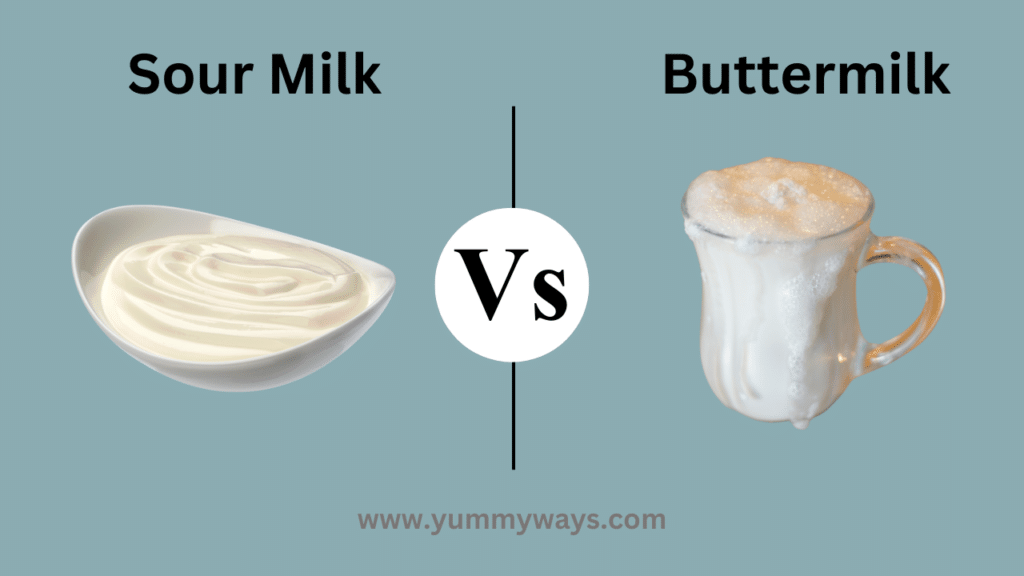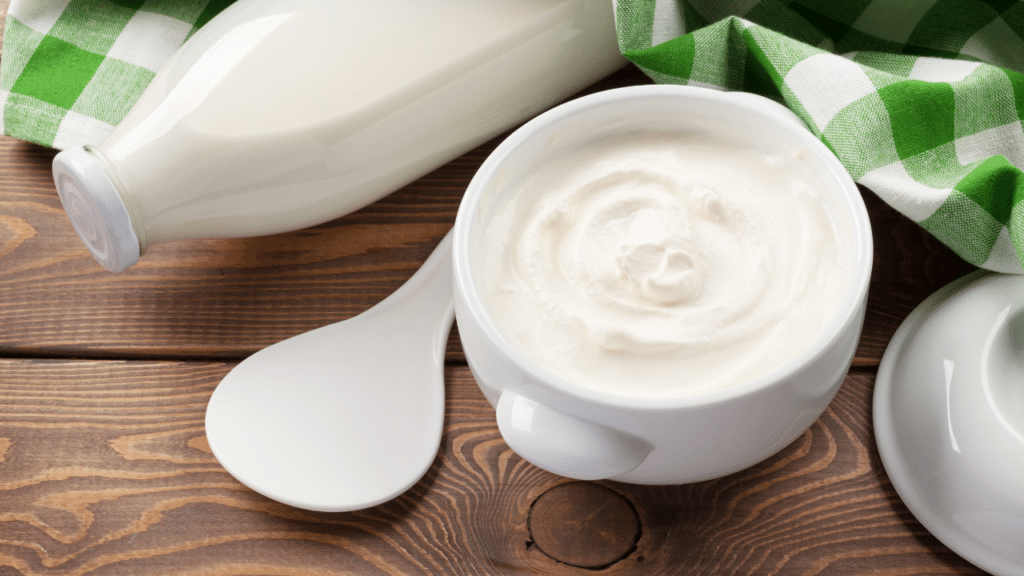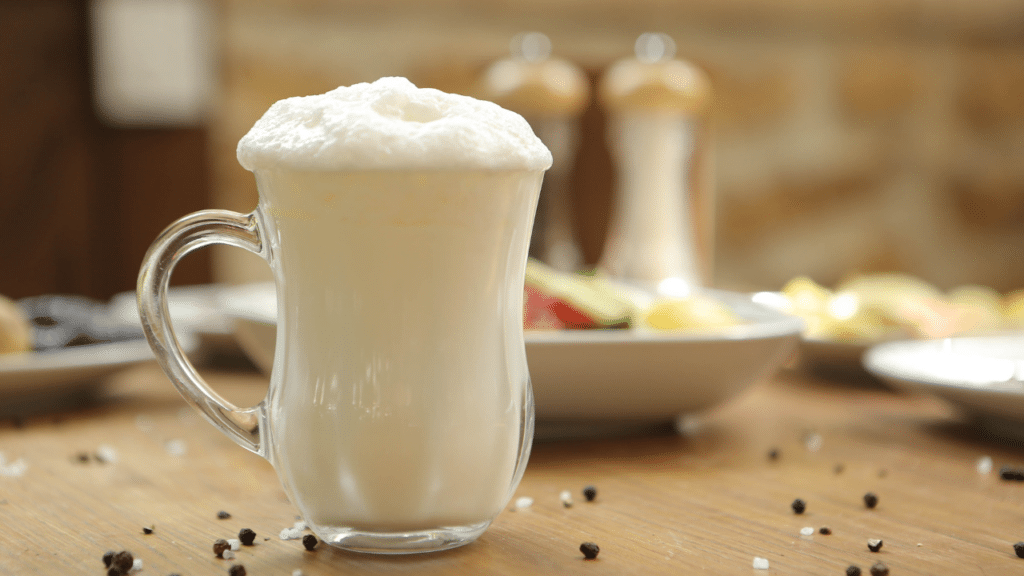Are you wondering what to do with leftover milk that’s gone sour? Look no further! In this article, we present to you the battle between two tangy dairy contenders: sour milk versus buttermilk. It’s time to transform those spoiled cartons into something savoury and delicious. Sour milk, with its pungent aroma and sour taste, might not be the first choice for your morning cereal but don’t throw it out just yet. This often-overlooked ingredient has some surprising uses in the kitchen. On the other side of the ring, we have buttermilk, renowned for its creamy texture and slightly tangy flavour.
Both of these dairy stars have their unique characteristics, making them versatile in various culinary creations. Join us as we dive into the world of spoiled dairy and explore the pros and cons of using sour milk and buttermilk in your recipes. From baking to marinades and even as a substitute for other dairy products, you’ll be amazed at the possibilities. Get ready for a taste bud tango as we uncover the secrets of sour milk and buttermilk in this ultimate showdown!
Also Read: Cream Cheese Vs Buttercream Frosting: Which Comes Out on Top?

Contents
What is sour milk?
Sour milk, with its pungent aroma and sour taste, might not be the first choice for your morning cereal but don’t throw it out just yet. This often-overlooked ingredient has some surprising uses in the kitchen. Sour milk is simply milk that has turned sour due to the growth of bacteria, such as Lactobacillus, which convert lactose into lactic acid. While the idea of consuming sour milk may not sound appealing, its unique flavour can add depth and tanginess to various dishes.

What is buttermilk?
Buttermilk is a liquid left behind after churning butter from cream. However, the buttermilk found in stores today is usually made by adding lactic acid bacteria to regular milk. This creates a cultured product with a similar taste and texture to traditional buttermilk.

Also Read: Margarine vs Butter: Which is Better for Your Health?
Overview Of Sour Milk vs Buttermilk
| Aspect | Sour Milk | Buttermilk |
|---|---|---|
| Definition | Sour milk is regular milk that has turned sour due to natural bacterial fermentation or the addition of an acid like vinegar or lemon juice. | Buttermilk is a tangy, acidic milk product left over after churning butter from cream. It can also be cultured buttermilk, which is intentionally fermented. |
| Taste and Flavor | Sour and tangy with a slightly acidic taste. | Tangy and slightly creamy, with a milder acidity compared to sour milk. |
| Consistency | The consistency can vary, but it is similar to regular milk or slightly thicker if naturally soured. | Thinner and more liquid compared to sour milk or regular milk. |
| Culinary Uses | Used in baking as a leavening agent when combined with baking soda, and in recipes where a tangy flavour is desired. | Commonly used in baking, especially for making fluffy pancakes, biscuits, and scones. Also used in salad dressings and marinades. |
| Nutritional Value | Contains nutrients present in regular milk, such as calcium, protein, and vitamins. May also contain probiotics if naturally fermented. | Contains nutrients like calcium and protein, similar to regular milk, but may have slightly reduced fat content due to butter extraction. |
| Acidity | The acidity of sour milk is variable and depends on the degree of sourness achieved. | Buttermilk has a controlled acidity, making it a consistent choice for cooking and baking. |
| Shelf Life | Has a shorter shelf life and may spoil faster due to the presence of live bacteria. | Has a longer shelf life than sour milk due to its controlled acidity and pasteurization. |
| Variations | Sour milk can vary widely in terms of sourness and thickness, depending on how it is made. | There are two main types: traditional buttermilk and cultured buttermilk, each with its flavour and texture. |
| Lactose Tolerance | Individuals with lactose intolerance may have difficulty with both sour milk and buttermilk, depending on their tolerance level. | Lactose content can vary, but buttermilk is often better tolerated by some with lactose intolerance due to the fermentation process. |
Can I use buttermilk instead of sour milk?
Yes, you can use buttermilk as a substitute for sour milk in most recipes. Both buttermilk and sour milk have a tangy flavour, and their acidity can serve similar purposes in cooking and baking. However, there are a few things to keep in mind when making this substitution:
Consistency: Buttermilk is usually thinner than sour milk. If the consistency of the liquid in your recipe is crucial, you might need to adjust the amount of buttermilk or use a thicker alternative, such as cultured buttermilk.
Taste: Buttermilk has a milder tangy flavour than sour milk, so the final result may have a slightly different taste. If you prefer a more pronounced tang, add a small amount of lemon juice or white vinegar to the buttermilk to increase the acidity.
Leavening: Both buttermilk and sour milk can be used as leavening agents in recipes, particularly when combined with baking soda. Ensure that the leavening agents are balanced correctly if you’re switching between buttermilk and sour milk in a recipe.
Cooking and Baking: Buttermilk is a popular choice in baking, especially for items like pancakes, biscuits, and cakes. It can also be used in salad dressings and marinades. Remember that its milder flavour might work well in some recipes but may not be suitable for others, depending on the desired taste profile.
Sour milk vs buttermilk taste
Sour milk has a tangy and sour flavour, as the name suggests. It can range from mildly sour to quite tart, depending on the extent of fermentation. The sourness in sour milk comes from the natural fermentation of lactose (milk sugar) by lactic acid bacteria. This process generates lactic acid, which imparts the characteristic tangy taste. The flavour of sour milk can be more pronounced and varied, as it depends on factors like the milk’s freshness, bacterial strains involved, and the fermentation time.
On the other hand, Buttermilk has a tangy, slightly creamy, and milder acidic taste compared to sour milk. The tanginess in buttermilk also results from the fermentation process, but it’s typically more controlled and consistent in terms of flavour. This is because buttermilk can be either traditional buttermilk, which is the liquid left over after churning butter from cream, or cultured buttermilk, which is intentionally fermented and often pasteurized. Cultured buttermilk often has a more predictable and milder taste due to the specific bacterial cultures used in its production.
Also Read: Evaporated Milk vs Powdered Milk: Which is Better for Cooking?
Sour milk vs buttermilk nutrition
| Nutrient (per 1 cup, approximately 245 grams) | Sour Milk | Buttermilk |
|---|---|---|
| Calories | 102 | 99 |
| Total Fat | 2.3 grams | 2.2 grams |
| Saturated Fat | 1.4 grams | 1.4 grams |
| Cholesterol | 9 mg | 12 mg |
| Sodium | 107 mg | 284 mg |
| Total Carbohydrates | 12 grams | 12 grams |
| Dietary Fiber | 0 grams | 0 grams |
| Sugars | 12 grams | 12 grams |
| Protein | 8 grams | 8 grams |
| Calcium | 276 mg (about 28% of the Daily Value) | 366 mg (about 37% of the Daily Value) |
| Vitamin D | 99 IU (about 25% of the Daily Value) | 101 IU (about 25% of the Daily Value) |
Sour milk vs buttermilk calories
| Nutrient | Sour Milk (per 1 cup, approximately 245 grams) | Buttermilk (per 1 cup, approximately 245 grams) |
|---|---|---|
| Calories | 102 calories | 99 calories |
how to make sour milk
If you have fresh milk about to expire, you can easily turn it into sour milk at home. Here’s a simple method to make your sour milk:
1. Pour the fresh milk into a clean container.
2. Add a tablespoon of lemon juice or white vinegar per cup of milk.
3. Stir the mixture gently and let it sit at room temperature for about 10 minutes.
4. After 10 minutes, give the mixture a taste. If it’s not tangy enough, let it sit for a few more minutes until it reaches the desired sourness.
5. Once the milk has turned sour, you can use it immediately or store it in the refrigerator.
Is sour milk bad for you?
Sour milk is not inherently harmful and can be consumed in moderation without major health concerns. It is a product of natural bacterial fermentation that results in a tangy flavour. Some types of sour milk may even contain beneficial probiotic bacteria that can support gut health. However, it’s essential to ensure that sour milk is prepared and stored properly to prevent contamination by harmful bacteria. If lactose intolerant, you may tolerate sour milk better than regular milk due to reduced lactose content, but individual tolerance varies.
Ultimately, whether you enjoy the taste of sour milk and how it fits into your diet is a matter of personal preference. It’s crucial to exercise caution when making or consuming sour milk at home and to follow recommended storage guidelines to ensure safety. Consulting with a healthcare professional or dietitian can provide personalized guidance based on your specific dietary and health needs.
Also Read: Sesame Paste vs Tahini: Unveiling the Differences
Which One is Better?
In the ultimate showdown between sour milk and buttermilk, it’s hard to declare a clear winner. Both of these tangy dairy contenders have their unique characteristics and can be used in a variety of culinary creations.
Sour milk, with its pungent aroma and sour taste, can be a surprising addition to your cooking and baking repertoire. From substituting buttermilk in recipes to creating tangy marinades and cultured dairy products, sour milk offers a distinct flavour profile that can take your dishes to the next level.
Buttermilk, on the other hand, with its creamy texture and milder tang, is a staple in baking and adds a delightful richness to various recipes. From fluffy pancakes and biscuits to tender fried chicken, buttermilk brings moisture and flavour to the table.
Ultimately, the choice between sour milk and buttermilk depends on personal preference and the specific recipe. If you enjoy a stronger tang and want to experiment with unique flavours, sour milk might be your go-to option. If you prefer a milder tang with a creamy texture, buttermilk is the way to go.
So, the next time you find yourself with leftover milk that’s gone sour, don’t let it go to waste. Embrace the tanginess and transform it into something savoury and delicious. Whether you choose sour milk or buttermilk, you’ll be amazed at the culinary possibilities await you!